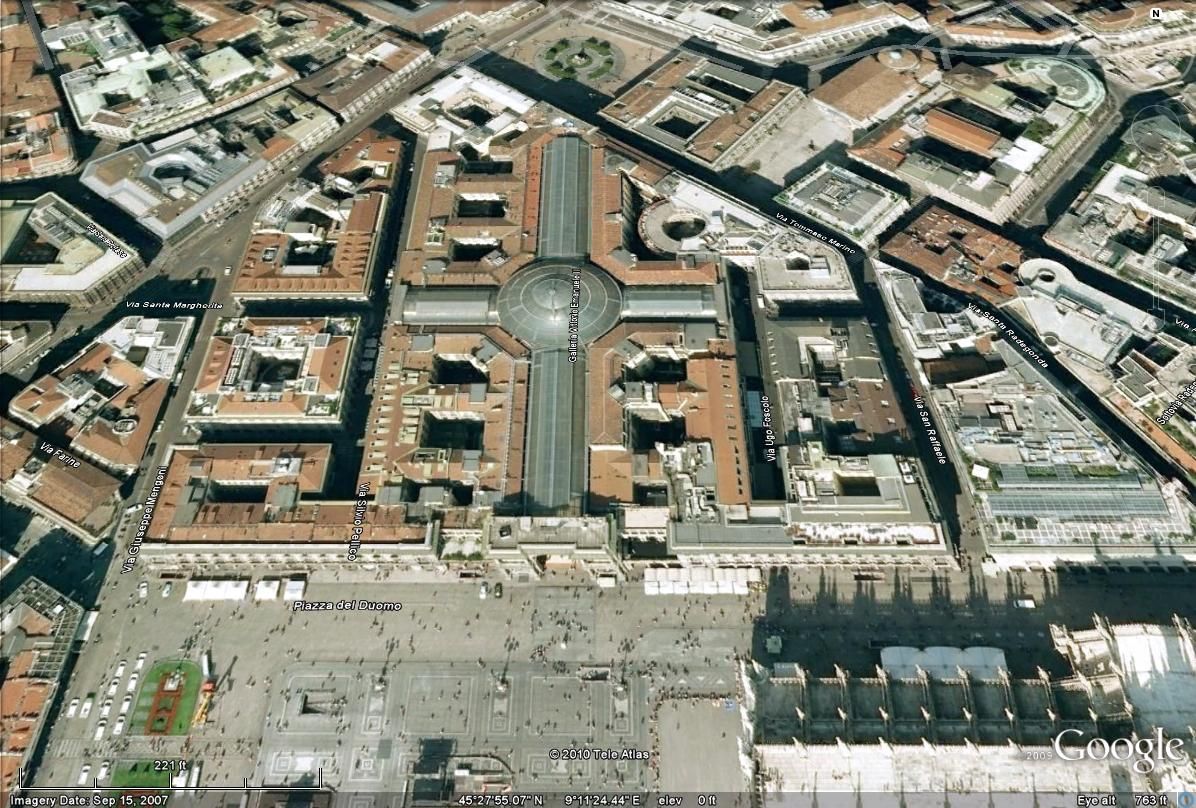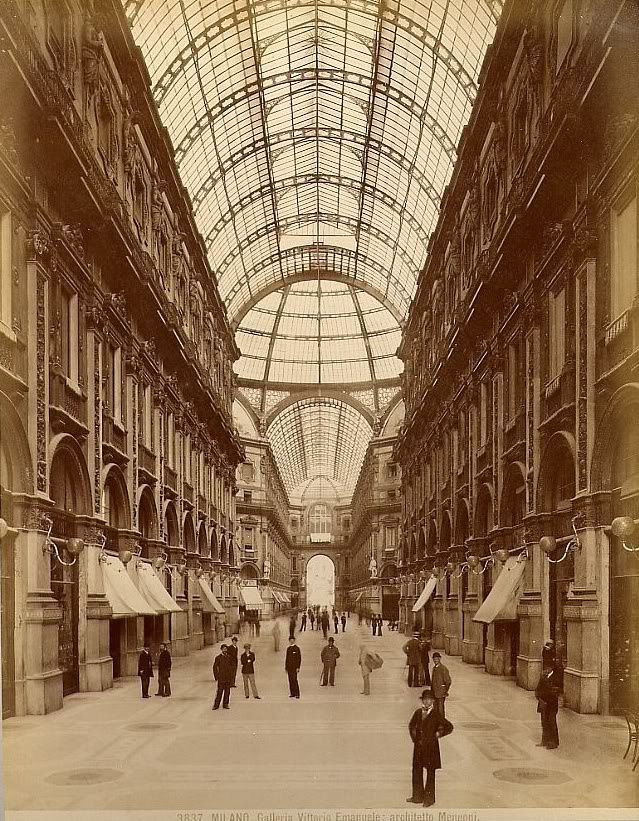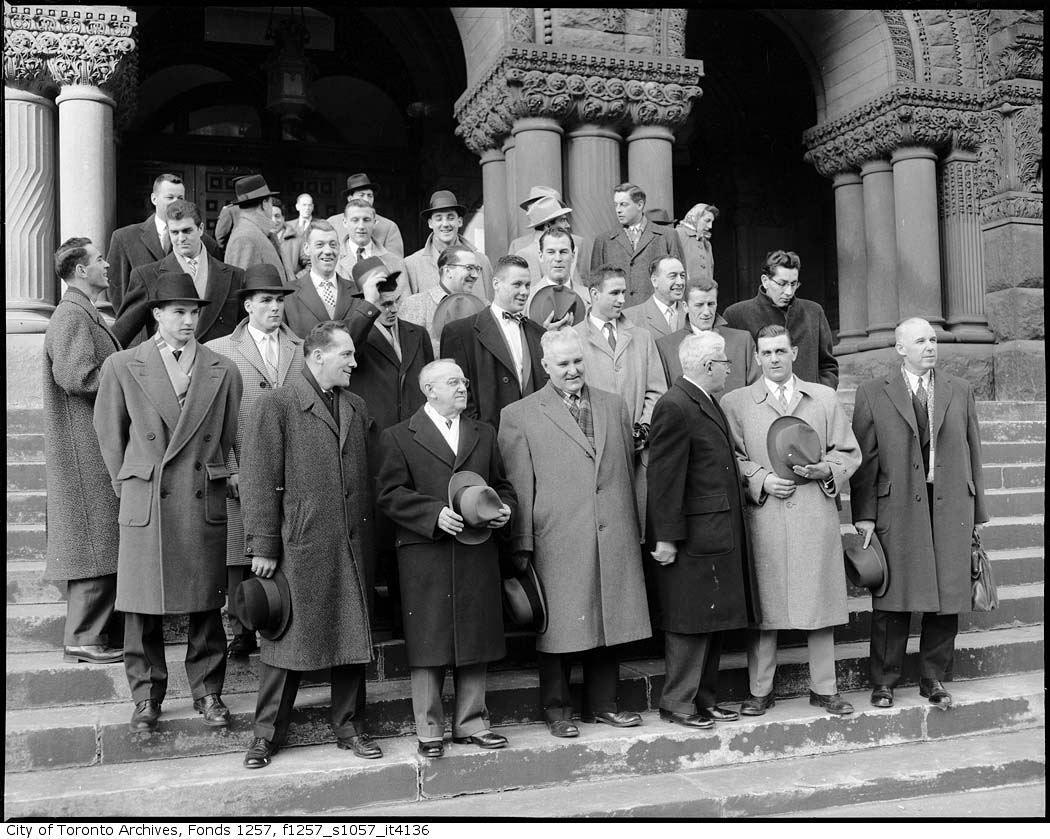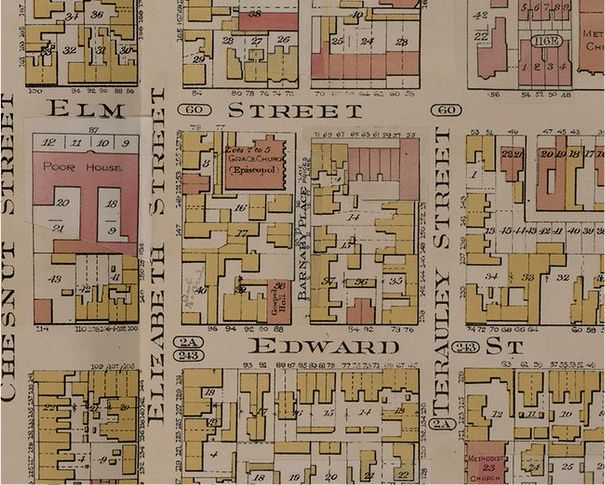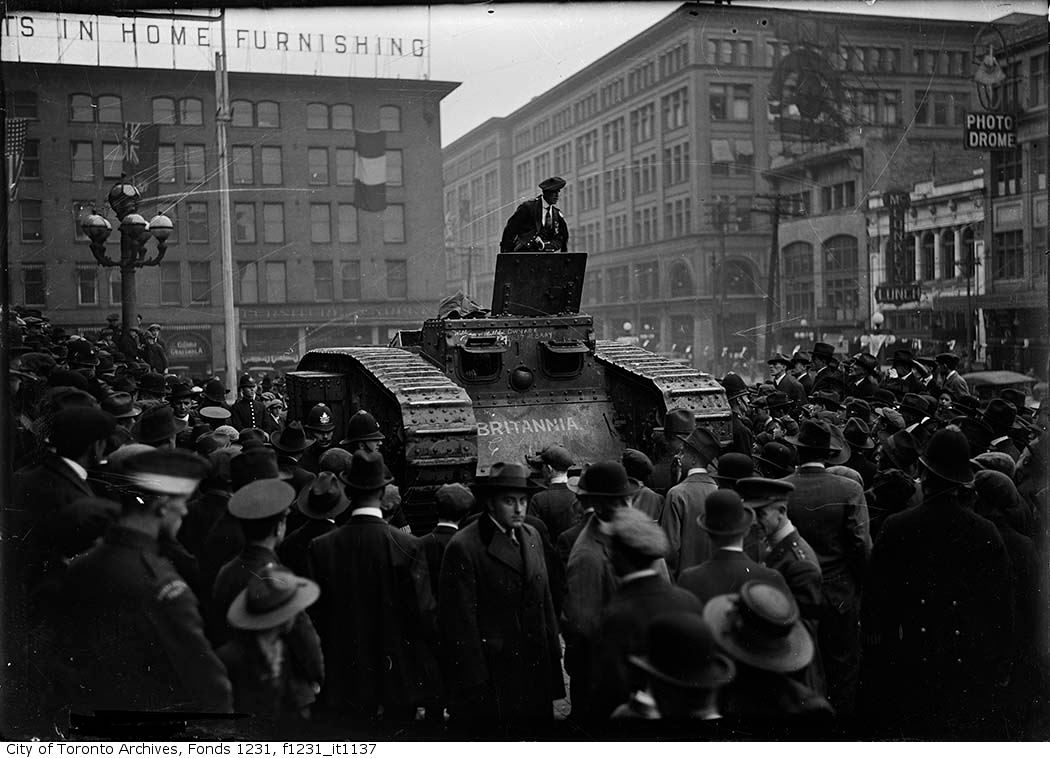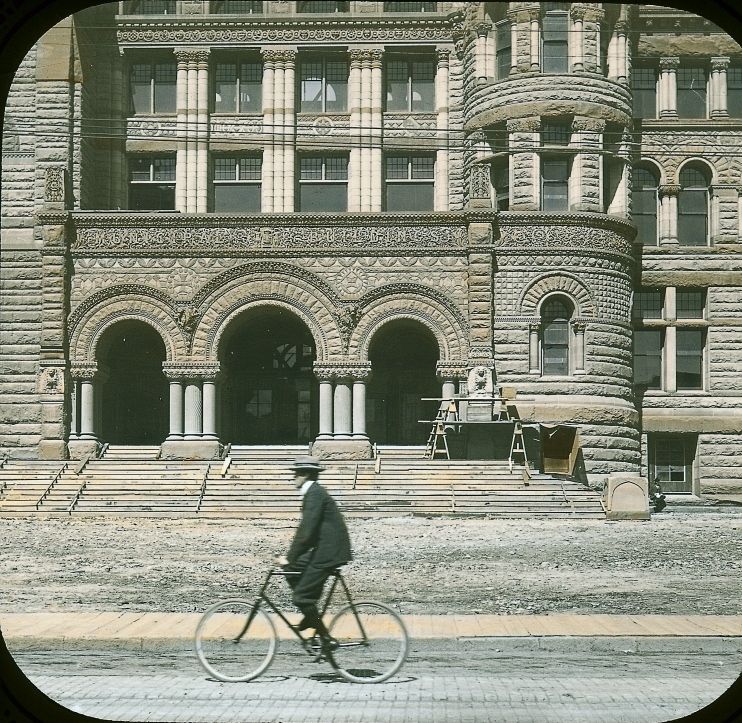The Eaton Centre articles about the proposed demolition of the Old City Hall in 1966 and the last picture showing the group posing on its steps turned on the proverbial lightbulb over my head and helped answer the question as to why its demolition was so vociferously opposed. After all, the New City Hall had just opened the year before, and the concept of historical preservation was in its infancy (Penn Station had been demolished in 1963). The list of significant buildings that were lost post-1966 (the Temple Building, the Odeon Carlton, the University Theatre, the Toronto Star Building, the Globe and Mail Building, hundreds of Victorian houses, etc.) is lengthy and their demolitions never galvanized the public in the same way (save for the proposed destruction of Union Station).
I think that the reason is only partly architectural. The main reason, I believe, is that for Torontonians at that time, the Old City Hall was the psychic heart and soul of the city, its symbol, its front door, its backdrop for every visiting celebrity, demonstration, memorial service, civic event and celebration. Nathan Phillips Square was too new at this time to replace the front steps of the Old City Hall in this role. As a photographic tool, the combination of the steps and the elaborate facade made it a natural setting for that photo op (for which there really is no equivakent today). Also, sitting at the head of Bay Street, a block from the main intersection of the city at the time (i.e. Queen & Yonge), it was at the time the "heart" of the city.
The Eatons executives and their consultants underestimated the role this building played for its citizens.
